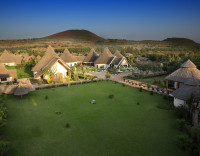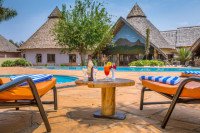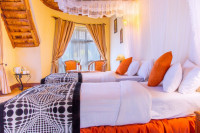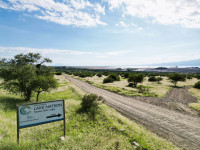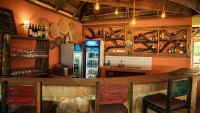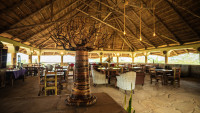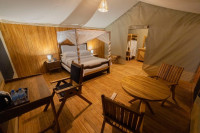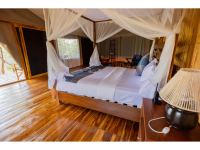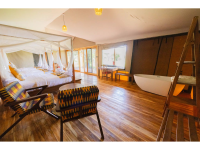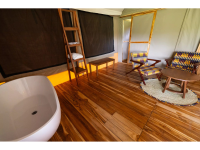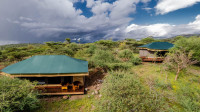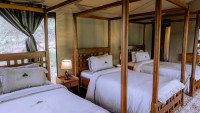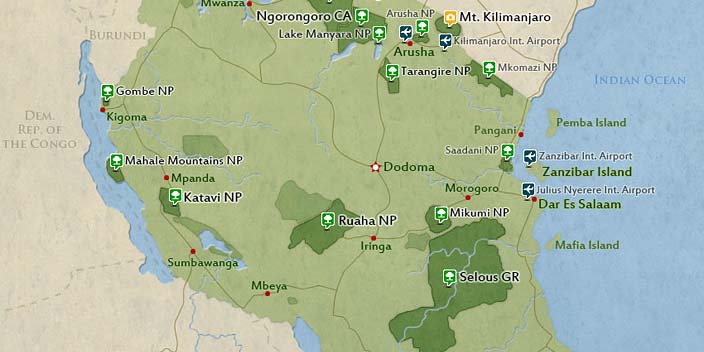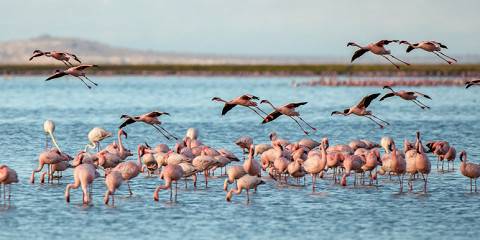
$2,970 pp (USD)
2 travelers on Start dateArrival
Arrival

Day 1
Arusha to Tarangire
Arusha to Tarangire
After picking you up from your hotel or lodge, our driver guide will take you to Tarangire National Park for a picnic lunch and game drive. Tarangire is well-known for both its baobab trees and its enormous elephant population. Up to 3,000 elephants, 25,000 wildebeest, and 30,000 zebras migrate across it each year.
- Main Destination:
- Tarangire National Park
- Accommodation:
- Farm of Dreams Lodge
- Meals & Drinks:

Day 2
Tarangire to Lake Natron
Tarangire to Lake Natron
We'll pick you up from your accommodation after breakfast and take you off the beaten track, up the Rift Valley Escarpment, and towards Lake Natron. As you approach the small Maasai village of Ngare Sero, you will soon see Ol'doinyo Lengai, the sacred mountain of the Masai people, in the distance. You will be driving through a typical Maasai country. You'll go on a guided bush walk to Lake Natron, where thousands of flamingos gather to breed on the alkaline body of water that glistens pink along its shores. Alternatively, you take a stroll to the nearby waterfall and enjoy a refreshing swim.
- Main Destination:
- Lake Natron
- Accommodation:
- Africa Safari Lake Natron Lodge
- Meals & Drinks:

Day 3
Lake Natron -Northern Serengeti National Park
Lake Natron -Northern Serengeti National Park
You will travel to the Serengeti following an early breakfast. It climbs the Rift Valley into the vast grasslands of the Serengeti on daring slopes. One of the biggest natural wildlife movement systems is found in Serengeti National Park. Over 1.4 million gnus, nearly 300,000 Thomson's gazelles, roughly 200,000 zebras, and several thousand topis migrate to the areas with rich meadows and vegetation every year between the three conservation areas mentioned. Numerous other animal species, including giraffes, buffalo, hyenas, elephants, and crocodiles, can be found in the park. The number of feline predators is very high; there are over 3000 lions, 300 cheetahs, and an estimated 400–700 leopards that hunt here.
Later on, you will be driven to your accommodations for the night.
- Main Destination:
- Serengeti National Park
- Accommodation:
- Safari Haven Migration Camp
- Meals & Drinks:

Day 4
Northern Serengeti National Park
Northern Serengeti National Park
Large migratory herds reside there during the dry season. The Northern Serengeti is a largely unexplored wilderness that boasts an abundance of wildlife and breathtaking scenery. Its most alluring feature is without a doubt the enormous migratory herds of zebras and wildebeests that pass through this area during the dry season.
However, the North Serengeti is also home to a diverse array of resident animals, including crocodiles, giraffes, hippos, lions, elephants, and the rare oribi antelopes.
- Main Destination:
- Serengeti National Park
- Accommodation:
- Safari Haven Migration Camp
- Meals & Drinks:

Day 5
Northern - Central Serengeti National Park
Northern - Central Serengeti National Park
After a leisurely morning, you'll take a drive toward the Central Serengeti and spend the day watching the Big Five species in the Seronera Valley. The Seronera Valley is home to a diverse range of wildlife throughout the year, including carnivores like lions, cheetahs, hyenas, and leopards.
You will also be able to see ungulates like warthogs, zebras, impalas, giraffes, buffaloes, and hippos. Can you distinguish between a Grant and a Thomson gazelle? Both gazelles have white rumps. Conversely, a narrow black horizontal stripe borders the Thomson gazelle's rump, running beneath the lighter brown one. Furthermore, the Thomson gazelle's tail is entirely black, but the Grant gazelle's white rump patch extends above the tail.
- Main Destination:
- Northern Serengeti National Park
- Accommodation:
- Safari Haven Serengeti Camp
- Meals & Drinks:

Day 6
Central Serengeti to Ngorongoro Crater
Central Serengeti to Ngorongoro Crater
You will enjoy another game drive in Serengeti National Park before continuing to the Ngorongoro Conservation Area. The incredible Ngorongoro Crater, the largest caldera in the world, is recognized as a World Heritage Site. They are dominated by 600-meter-tall cliffs that offer a sharp drop-off to an open area covering about 246 square kilometers.
Upon arrival at the crater, you will have to rest and have dinner at your accommodation site.
- Main Destination:
- Central Serengeti National Park
- Accommodation:
- Embalakai Ngorongoro Camp
- Meals & Drinks:

Day 7
Ngorongoro Crater
Ngorongoro Crater
You will start your 6–7-hour game drive down the crater at 6:00 am after an early breakfast, around 5:50 am, and pack a picnic lunch. You'll walk onto the crater floor to get a close-up look at the people living in this World Heritage Site. Here, you will have a picnic lunch. All year long, the Ngorongoro Crater offers fantastic wildlife viewing. Because there is always plenty of grazing and water available, the wildlife in this area has a permanent population.
Later on, you will drive to Arusha for your departure.
- Main Destination:
- Ngorongoro Crater
- Accommodation:
- No accommodation (End of tour)
- Meals & Drinks:

_1813_5e20b935b89f3.gif)













